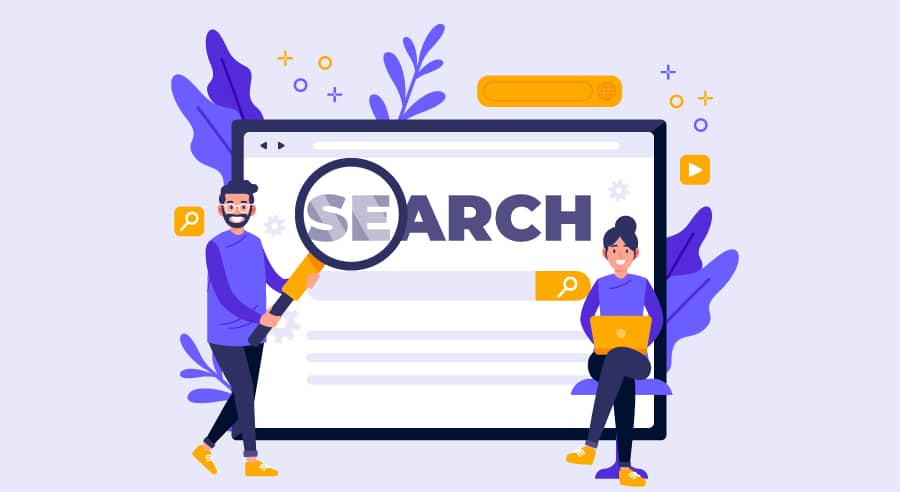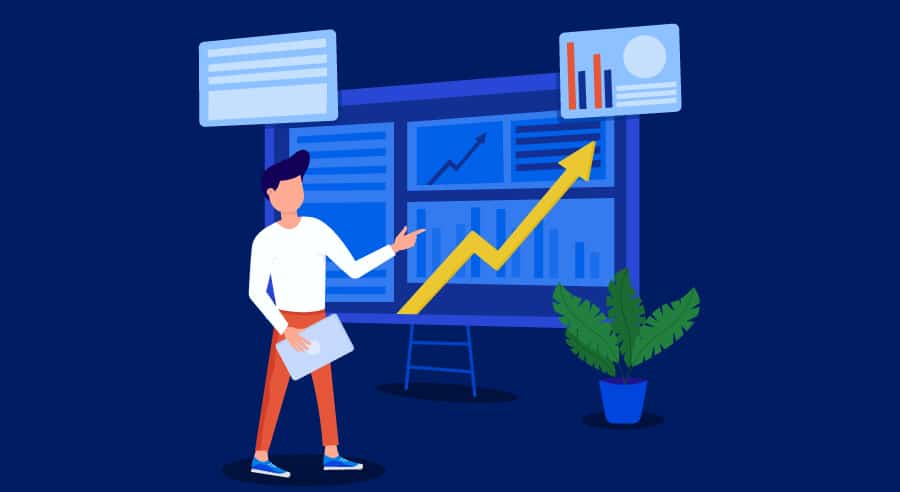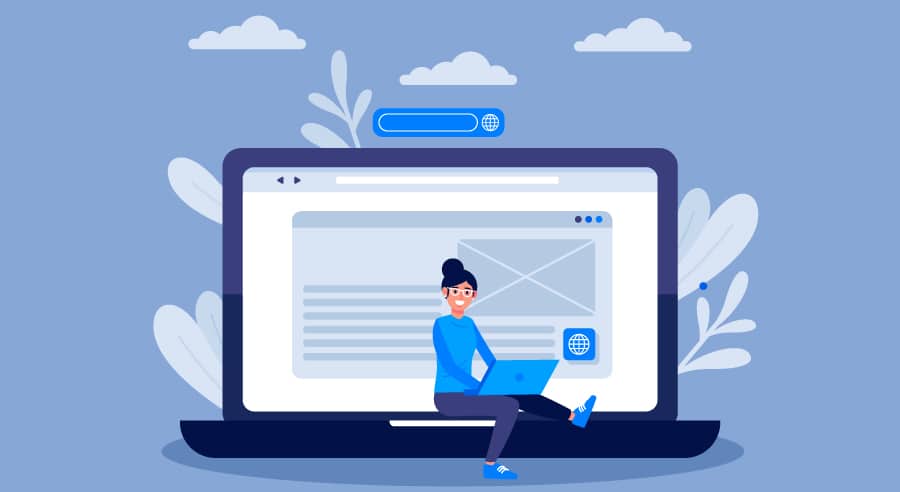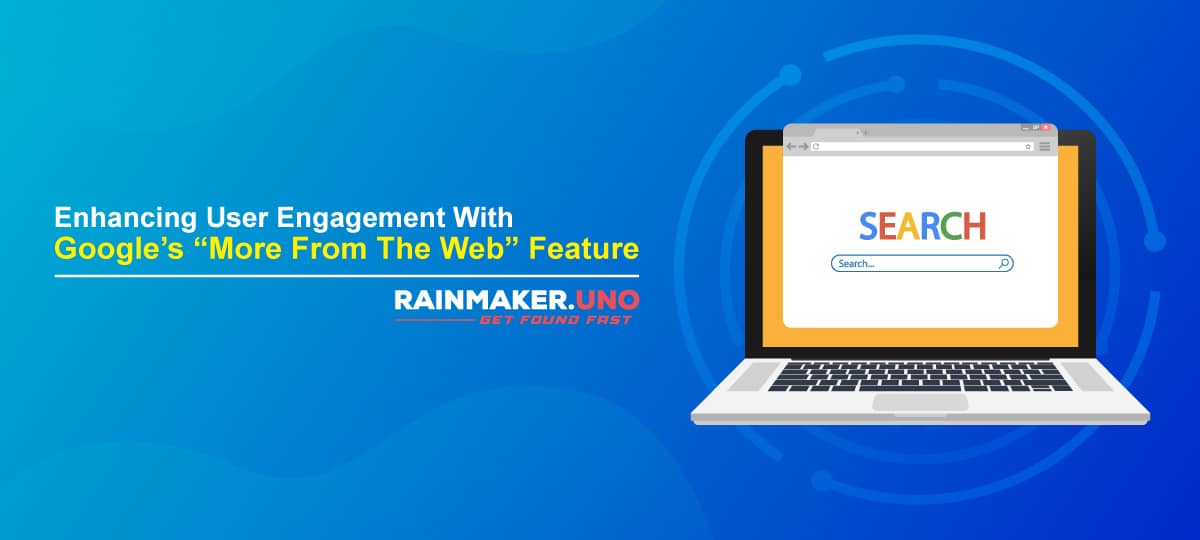In such a dynamic marketplace, staying on top of market trends and being strategic about personalization is crucial to maintaining the competitive edge.
Therefore, “More from the Web” demands careful consideration if you want to improve user experience, raise conversion rates, or increase user engagement.
Personalized digital content is the way of the future, and by implementing the tactics given in this article, you can ensure that your business is prepared to handle the needs of today’s tech-savvy online users.
In today’s bottleneck competition within the digital marketplace, capturing and retaining user attention is essential yet challenging.
A huge volume of content is available online, which overwhelms the audience who are browsing to seek specific information, products, or services.
That’s why 80% of the online audience likes to engage with websites that offer personalized experiences, making it a crucial digital strategy.
Even search engines focus on offering personalized results to their users, which is why Google introduced the “More From The Web” feature to drive user engagement, increase page views, and boost conversion rates.
But what exactly is “More from the Web,” and how can it benefit your business?
Understanding “More From The Web” on Search Engine Results Page

“More from the Web” is a content recommendation section at the bottom of Google’s results, where relevant articles, products, or services are presented to users based on their behavior and preferences.
It’s an advanced tool that uses progressive algorithms and machine learning to offer personalized content, keeping users engaged and encouraging them to explore your website.
Whether you run a news site, an eCommerce platform, or a blog, “More from the Web” enables a far more engaging experience by recommending content that matches a user’s interests better.
It keeps visitors on your site for a long time, increasing the chances of conversion through more reads, product sales, or more sales.
Further, a few steps in “More From The Web” give updated and relevant information to the audience. These include:
Data Collection
It starts with gathering user information, which includes monitoring user activity on a website. For example, which pages users visit, how long they stay on them, what they click on, and even how they scroll are helpful as they give insight into users’ interests.
Algorithmic Analysis
In the second step, Google algorithms analyze the data collected to identify trends in user behavior. For instance, if a user has been reading articles on digital marketing for quite a long time, the algorithm identifies that interest and categorizes users in those terms.
Content Matching
The next step is to match the user with relevant content. This is where machine learning comes into play. By analyzing past interactions, the algorithms forecast the kind of content that users interact with. The system’s recommendations get more precise and tailored as it collects additional data over time.
Real-Time Recommendations
The final step is the real-time delivery of these content recommendations. As the user navigates your site, “More from the Web” will dynamically update the suggested content based on the user’s current activity. This way, the recommendation will remain relevant and timely, engaging users and encouraging exploration.
Benefits of "More from the Web" For Your Business

Adding “More from the Web” to your website offers your business several benefits, including better customer experience.
Here’s how this powerful tool can impact your business:
1. Enhanced User Engagement
If online businesses want to succeed in their market segment, they must pay attention to customer engagement. One effective method is to incorporate the “More from the Web” feature, which supports higher user engagement with personalized content tailored to individual users.
This feature fosters a stronger customer-brand relationship by keeping the visitors on your site longer and encouraging them to explore and share more of your content.
2. Improved Conversion Rates
“More from the Web” helps businesses suggest products based on a user’s browsing history and preferences.
For instance, the recommendation engine can suggest products like athletic socks or workout gear if someone is viewing running shoes.
This form of targeting greatly increases the chance of conversion.
3. Reduced Bounce Rates
A high bounce rate often indicates that users cannot find what they’re looking for and thus leave your site prematurely.
“More from the Web” helps reduce bounce rates by displaying relevant content. When users are offered suggested recommendations based on their preferences, they start showing more interest in and navigating through your website, thus reducing the number of bounces.
4. Increased Page Views
Page views are a vital metric for many websites, particularly those that rely on ad revenue for their business model.
Multiple page views translate to users seeing more ads, which results in higher revenue.
The “More from the Web” section provides user-directed results through connecting content, enhancing on-site page view amounts and overall user experience.
5. Better Customer Retention
The “More from the Web” feature plays a significant role in achieving high customer retention.
This is done by delivering personalized recommendations to your audience, indicating that you care for high-quality and relevant content.
This customized experience breeds loyalty and drives repeat visits, promoting and growing your online business.
How To Implement "More from the Web" On Your Website

Integrating “More from the Web” is easy as several options are available depending on your technical capabilities and business needs.
API (Application Programming Interface) Integration
API integration is the most effective way to integrate “More from the Web.”
APIs are widely available from third parties, enabling you to easily include their recommendation engines on your website. Since these APIs are flexible, the recommendations can be tweaked by default to suit your needs.
When deciding between API providers, the main factors would be support, scalability, and ease of integration.
To make deployment easy, select a vendor that offers comprehensive documentation and support.
Consider the provider’s history and reputation in the industry as well. Reliable providers with a history of smooth connections are more likely to give reliable recommendations.
Customization
Customization within “More from the Web” provides maximum user experience by optimizing the layout and refining the algorithms.
It allows businesses to recommend relevant content that increases the conversion rate by better engagement, making each interaction more relevant and effective.
Using advanced techniques, such as user feedback and personalization, allows recommendations in sync with user behavior to improve conversion rates and customize the overall experience.
A/B Testing
A/B testing is valuable in determining which recommendations perform best for your target audience.
This helps tune the search results and understand how people interact with your website through direct metrics such as click-through rate, conversion rate, and user engagement.
